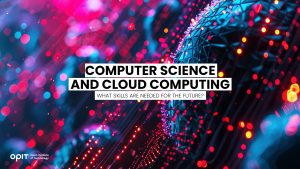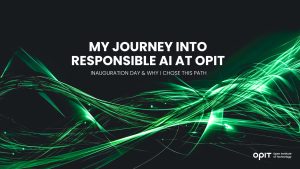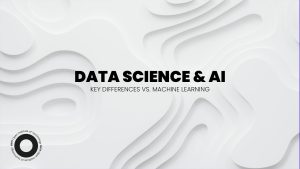
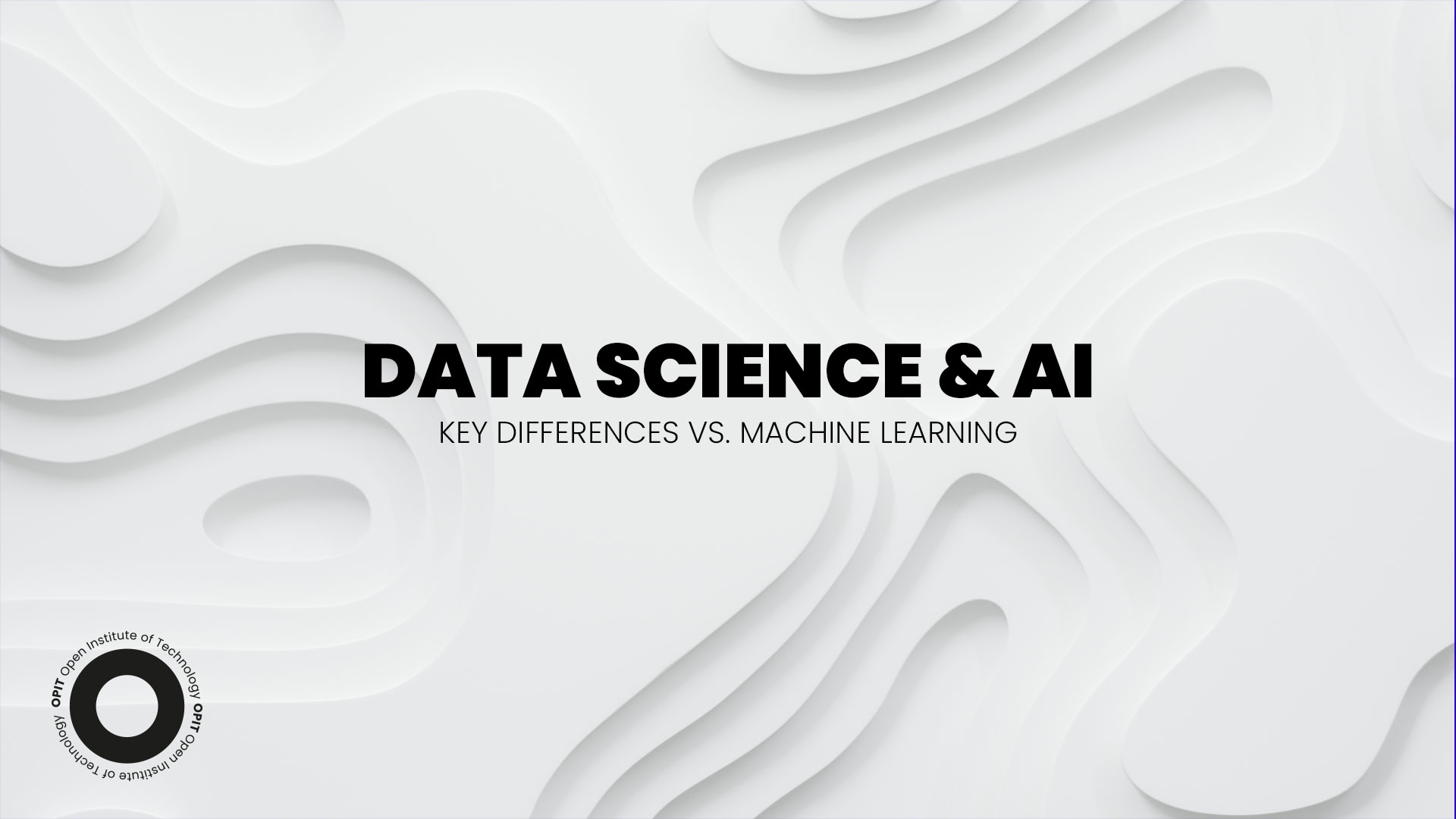
Machine learning, data science, and artificial intelligence are common terms in modern technology. These terms are often used interchangeably but incorrectly, which is understandable.
After all, hundreds of millions of people use the advantages of digital technologies. Yet only a small percentage of those users are experts in the field.
AI, data science, and machine learning represent valuable assets that can be used to great advantage in various industries. However, to use these tools properly, you need to understand what they are. Furthermore, knowing the difference between data science and machine learning, as well as how AI differs from both, can dispel the common misconceptions about these technologies.
Read on to gain a better understanding of the three crucial tech concepts.
Data Science
Data science can be viewed as the foundation of many modern technological solutions. It’s also the stage from which existing solutions can progress and evolve. Let’s define data science in more detail.
Definition and Explanation of Data Science
A scientific discipline with practical applications, data science represents a field of study dedicated to the development of data systems. If this definition sounds too broad, that’s because data science is a broad field by its nature.
Data structure is the primary concern of data science. To produce clean data and conduct analysis, scientists use a range of methods and tools, from manual to automated solutions.
Data science has another crucial task: defining problems that previously didn’t exist or slipped by unnoticed. Through this activity, data scientists can help predict unforeseen issues, improve existing digital tools, and promote the development of new ones.
Key Components of Data Science
Breaking down data science into key components, we get to three essential factors:
- Data collection
- Data analysis
- Predictive modeling
Data collection is pretty much what it sounds like – gathering of data. This aspect of data science also includes preprocessing, which is essentially preparation of raw data for further processing.
During data analysis, data scientists draw conclusions based on the gathered data. They search the data for patterns and potential flaws. The scientists do this to determine weak points and system deficiencies. In data visualization, scientists aim to communicate the conclusions of their investigation through graphics, charts, bullet points, and maps.
Finally, predictive modeling represents one of the ultimate uses of the analyzed data. Here, create models that can help them predict future trends. This component also illustrates the differentiation between data science vs. machine learning. Machine learning is often used in predictive modeling as a tool within the broader field of data science.
Applications and Use Cases of Data Science
Data science finds uses in marketing, banking, finance, logistics, HR, and trading, to name a few. Financial institutions and businesses take advantage of data science to assess and manage risks. The powerful assistance of data science often helps these organizations gain the upper hand in the market.
In marketing, data science can provide valuable information about customers, help marketing departments organize, and launch effective targeted campaigns. When it comes to human resources, extensive data gathering, and analysis allow HR departments to single out the best available talent and create accurate employee performance projections.
Artificial Intelligence (AI)
The term “artificial intelligence” has been somewhat warped by popular culture. Despite the varying interpretations, AI is a concrete technology with a clear definition and purpose, as well as numerous applications.
Definition and Explanation of AI
Artificial intelligence is sometimes called machine intelligence. In its essence, AI represents a machine simulation of human learning and decision-making processes.
AI gives machines the function of empirical learning, i.e., using experiences and observations to gain new knowledge. However, machines can’t acquire new experiences independently. They need to be fed relevant data for the AI process to work.
Furthermore, AI must be able to self-correct so that it can act as an active participant in improving its abilities.
Obviously, AI represents a rather complex technology. We’ll explain its key components in the following section.
Key Components of AI
A branch of computer science, AI includes several components that are either subsets of one another or work in tandem. These are machine learning, deep learning, natural language processing (NLP), computer vision, and robotics.
It’s no coincidence that machine learning popped up at the top spot here. It’s a crucial aspect of AI that does precisely what the name says: enables machines to learn.
We’ll discuss machine learning in a separate section.
Deep learning relates to machine learning. Its aim is essentially to simulate the human brain. To that end, the technology utilizes neural networks alongside complex algorithm structures that allow the machine to make independent decisions.
Natural language processing (NLP) allows machines to comprehend language similarly to humans. Language processing and understanding are the primary tasks of this AI branch.
Somewhat similar to NLP, computer vision allows machines to process visual input and extract useful data from it. And just as NLP enables a computer to understand language, computer vision facilitates a meaningful interpretation of visual information.
Finally, robotics are AI-controlled machines that can replace humans in dangerous or extremely complex tasks. As a branch of AI, robotics differs from robotic engineering, which focuses on the mechanical aspects of building machines.
Applications and Use Cases of AI
The variety of AI components makes the technology suitable for a wide range of applications. Machine and deep learning are extremely useful in data gathering. NLP has seen a massive uptick in popularity lately, especially with tools like ChatGPT and similar chatbots. And robotics has been around for decades, finding use in various industries and services, in addition to military and space applications.
Machine Learning
Machine learning is an AI branch that’s frequently used in data science. Defining what this aspect of AI does will largely clarify its relationship to data science and artificial intelligence.
Definition and Explanation of Machine Learning
Machine learning utilizes advanced algorithms to detect data patterns and interpret their meaning. The most important facets of machine learning include handling various data types, scalability, and high-level automation.
Like AI in general, machine learning also has a level of complexity to it, consisting of several key components.
Key Components of Machine Learning
The main aspects of machine learning are supervised, unsupervised, and reinforcement learning.
Supervised learning trains algorithms for data classification using labeled datasets. Simply put, the data is first labeled and then fed into the machine.
Unsupervised learning relies on algorithms that can make sense of unlabeled datasets. In other words, external intervention isn’t necessary here – the machine can analyze data patterns on its own.
Finally, reinforcement learning is the level of machine learning where the AI can learn to respond to input in an optimal way. The machine learns correct behavior through observation and environmental interactions without human assistance.
Applications and Use Cases of Machine Learning
As mentioned, machine learning is particularly useful in data science. The technology makes processing large volumes of data much easier while producing more accurate results. Supervised and particularly unsupervised learning are especially helpful here.
Reinforcement learning is most efficient in uncertain or unpredictable environments. It finds use in robotics, autonomous driving, and all situations where it’s impossible to pre-program machines with sufficient accuracy.
Perhaps most famously, reinforcement learning is behind AlphaGo, an AI program developed for the Go board game. The game is notorious for its complexity, having about 250 possible moves on each of 150 turns, which is how long a typical game lasts.
Alpha Go managed to defeat the human Go champion by getting better at the game through numerous previous matches.
Key Differences Between Data Science, AI, and Machine Learning
The differences between machine learning, data science, and artificial intelligence are evident in the scope, objectives, techniques, required skill sets, and application.
As a subset of AI and a frequent tool in data science, machine learning has a more closely defined scope. It’s structured differently to data science and artificial intelligence, both massive fields of study with far-reaching objectives.
The objectives of data science are pto gather and analyze data. Machine learning and AI can take that data and utilize it for problem-solving, decision-making, and to simulate the most complex traits of the human brain.
Machine learning has the ultimate goal of achieving high accuracy in pattern comprehension. On the other hand, the main task of AI in general is to ensure success, particularly in emulating specific facets of human behavior.
All three require specific skill sets. In the case of data science vs. machine learning, the sets don’t match. The former requires knowledge of SQL, ETL, and domains, while the latter calls for Python, math, and data-wrangling expertise.
Naturally, machine learning will have overlapping skill sets with AI, since it’s its subset.
Finally, in the application field, data science produces valuable data-driven insights, AI is largely used in virtual assistants, while machine learning powers search engine algorithms.
How Data Science, AI, and Machine Learning Complement Each Other
Data science helps AI and machine learning by providing accurate, valuable data. Machine learning is critical in processing data and functions as a primary component of AI. And artificial intelligence provides novel solutions on all fronts, allowing for more efficient automation and optimal processes.
Through the interaction of data science, AI, and machine learning, all three branches can develop further, bringing improvement to all related industries.
Understanding the Technology of the Future
Understanding the differences and common uses of data science, AI, and machine learning is essential for professionals in the field. However, it can also be valuable for businesses looking to leverage modern and future technologies.
As all three facets of modern tech develop, it will be important to keep an eye on emerging trends and watch for future developments.
Related posts
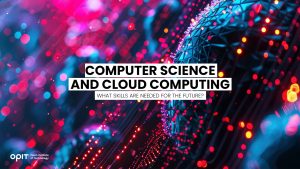
More and more students are turning to careers in computer science, and it’s easy to see why. The world is becoming increasingly reliant on and powered by modern technology with every passing day.
Emerging innovations like artificial intelligence (AI) and cloud computing are set to change the face of countless industries. This means qualifications in computer science unlock the doors to countless job opportunities.
However, this is also a dynamic and rapidly changing field – a field that demands a distinct set of core skills to not only achieve success, but also future-proof your career for years to come.
The Importance and Value of Computer Science and Cloud Computing Qualifications
Official statistics show that the European cloud computing market is set to experience an astonishing compound annual growth rate (CAGR) of almost 23% in the coming years, moving from a value of €110 billion in 2024 to a lower-end estimate €250 billion by 2028, and it won’t stop there.
The same sort of growth is being seen across the full spectrum of computer science fields and industries, with emerging technologies like AI, automation, and edge computing all spearheading the surging value and importance of these sectors.
The increasing shift away from conventional computing towards cloud computing shows just how quickly the technological world changes and evolves. It also demonstrates the need for professionals with a wide and varied range of skills, plus the ability to adapt to rapidly changing situations.
Those who can bring these skills to the table, supported by a comprehensive education and effective computer science qualifications, can enjoy:
- Entry into job markets that have exceptionally high levels of demand.
- Diverse career opportunities in fields that range from AI and machine learning to computer engineering and software development.
- Competitive salaries, with consistently high rates offered all around the world.
- Job security and stability, given the ever-increasing significance of technology in the modern world.
Core Skills to Master for Long Careers in Computer Science
Next, let’s look into the actual specific skills that computer science students and aspiring leaders will need to master to secure their futures.
Programming Languages
Being able to work with code is the bedrock of almost any career in computer science. Aspiring scientists will need to master one or several programming languages, including Java for building business and web apps, Python for web development, and C++ for system programming.
Networks and Architectures
Computer scientists also need a strong core knowledge of the fundamentals of the computing world, like how networks function, the various protocols and architectures that control the flow of data from device to device, etc.
Algorithms and Data
Algorithms play a fundamental role in fields like AI and machine learning, so computer scientists must understand how different algorithms and data structures drive computing processes, problem-solving, and development.
Software Development
Computer scientists may spend much of their time working on development projects post-graduation, which may include apps for the web, business, mobile, and more. A strong understanding of the stages of the software development lifecycle and processes involved is, therefore, essential.
Cloud Computing
With cloud computing growing in importance, unlocking whole new fields, like software as a service (SaaS) and desktop as a service (DaaS), the computer scientists of tomorrow will also need to have intricate knowledge of how cloud computing works and the potential it holds.
Soft Skills
Along with the many technical skills listed above, computer scientists will also benefit from vital soft skills that will help them when collaborating with others, presenting their ideas, driving innovation in their chosen fields, leading teams, and managing projects. These skills include:
- Being able to communicate effectively, both with fellow computer scientists and non-technical audiences as well
- Analytical thinking and problem-solving skills that help scientists understand and respond to challenges
- Adaptability, so that scientists can keep on learning, evolving their skill sets, and embracing new tech and ideas as they emerge
- The ability to work as part of a team, often fundamental for large-scale computing projects
- Attention to detail that allows you to spot that single line of code that needs fixing, or for tasks like debugging and data interpretation
Get the Best Start With a BSc in Computer Science at OPIT
We’ve seen the skills you need to succeed in computer science and cloud computing for years to come, but one question remains: where is the best place to gain these skills and acquire the necessary knowledge for genuine long-term success?
The answer: the Open Institute of Technology (OPIT).
An exclusively online learning platform specializing in computer science and digital business, OPIT offers a curated collection of online degrees for tomorrow’s technology leaders, including a Foundation Program for beginners, bachelor’s programs, and master’s degrees for the most experienced students.
Why Study at OPIT?
Advantages of studying with OPIT include:
- Accessible and flexible online learning to suit your needs and pace
- A focus on real-world applications of the skills and knowledge imparted
- A leading team of top tutors and professors from diverse fields and nations
- An international community of students with which to collaborate
- Progressive assessment of skills and knowledge, as opposed to exam-heavy schedules
Those planning pathways into computer science and cloud computing are best served by OPIT’s BSc in Computer Science program.
Lasting six terms and worth 180 ECTS credits, this fully remote, online, and accredited undergraduate degree was developed with insights from industry leaders, academics, and employers within the IT industry.
It equips graduates with both the fundamental theoretical knowledge they need to succeed in technology, as well as the practical skills required to enter the world of work and immediately innovate in fields like programming, cybersecurity, data science, AI, and cloud computing.
Like other courses and programs available at OPIT, this BSc in Computer Science provides students with a flexible learning program involving a mixture of recorded and engaging live content, progressive assessment, fast-track options for those who study at a faster pace, and round-the-clock accessibility to tutors and fellow learners.
If you feel that computer science or cloud computing is the right path for you, and you want to secure the foundational skills you need to succeed, consider the OPIT BSc in Computer Science to help you achieve your dreams.
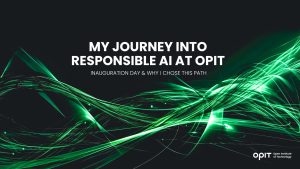
On September 8, 2025, the Open Institute of Technology (OPIT) officially inaugurated its 2025/26 academic year, welcoming a whole host of new students into the institute, ready to gain the skills and knowledge they need to be the tech industry leaders of tomorrow.
Faculty members, guest speakers from around the world, and hundreds of students from over 100 nations were all in attendance at the online inauguration event. Among them was one new student on the MSc in Responsible AI program: Rem Lampa, also known by his online alias, Kuya Dev.
A Filipino podcaster, speaker, and developer, Kuya Dev documented the inauguration experience in a YouTube video, sharing his thoughts on the event. Here’s a detailed look at his experience, showing the welcoming and effective way in which new OPIT students are brought into the institute from the first day.
An Overview of the Inauguration Event
The latest OPIT inauguration event was one to remember, with the institute celebrating several notable milestones. These included the first graduation of the MSc in Applied Data Science and AI program, and the unveiling of new industry connections and corporate partners offering opportunities for graduates.
Various guest speakers were in attendance, including the former Italian Minister of Education and current OPIT Rector, Professor Francesco Profumo, plus the CEO of Malta’s accreditation authority MFHEA, Dr. Rose Anne Cuschieri.
OPIT founder, Riccardo Ocleppo, also took to the stage to highlight the transformative role of education and the unique possibilities offered by the online-only OPIT degrees, stating:
“When we launched OPIT in 2022, we wanted to prove that an online degree could be rigorous, international, deeply connected to the world of work, and engaging. Three years later, we can already see results. This year alone, 300 new students are joining us, representing 98 nationalities.”
Those hundreds of new students were also, naturally, in attendance for their big inauguration day, welcomed into the institute’s various BSc and MSc programs in specialties like Computer Science, Digital Business, Digital Business and Innovation, and Cybersecurity.
Introducing Rem ‘Kuya Dev’ Lampa
As mentioned, one of the new students joining was vlogger and podcaster, Kuya Dev.
Already boasting extensive experience and technical expertise in the computing world, Kuya Dev has founded several tech communities, including Tech Career Shifter Philippines and Server-Side JavaScript.
He describes himself as an advocate for responsible AI and tech practices, and once gave a powerful TEDx talk about the negative potential impacts of artificial intelligence (AI), including its large carbon footprint and involving exploitation of workers in emerging nations. So, it was only fitting that he signed up for OPIT’s MSc in Responsible AI.
The MSc in Responsible AI Program
A postgraduate program lasting three or four terms (between 12 and 24 months, total), OPIT’s MSc in Responsible AI is an accredited program that combines technical skills with a core focus on the ethical implications of AI technology.
It explores real-world use cases of AI and ways in which this exciting and powerful technology can be used responsibly and sustainably, emphasizing its potential for both positive and negative change in areas such as the environment and society as a whole.
Students of this program enjoy all the usual benefits that come with studying at OPIT, like flexible-paced learning, tutors available on a daily basis, a dynamic and engaging online learning environment, and fair, progressive assessments over time.
Those who graduate can move into careers in AI Application Development, AI Research, and AI Business Consulting.
Highlights and Impressions of Kuya Dev’s Inauguration Experience
Inauguration is always a special moment in any student’s academic journey as they take their first tentative yet exciting steps towards new knowledge and skills that can unlock their potential and accelerate their development.
It can even be a “make-or-break” moment in which students can either feel welcomed, empowered, and eager to begin their studies, or, conversely, experience feelings of worry, doubt, or regret if the inauguration lacks the spark they were hoping to feel.
Fortunately, Kuya Dev and his many fellow new OPIT students had a very positive experience at the inauguration event, with the vlogger calling it both “very fruitful” and “very insightful.” Some of the specific highlights he mentioned included:
An International Community
Early in the inauguration event, Kuya Dev heard from Professor Francesco Profumo about how OPIT was welcoming students from over 90 countries.
This, for Kuya Dev and for so many other students, is one of the big perks of studying with OPIT. It allows students to meet, engage, and exchange with people from dozens of different backgrounds, cultures, and communities, learning new ways of thinking and collaborating.
Real World Applications
The OPIT inauguration also focused on another of the university’s key features: a focus not merely on imparting knowledge to students or making them memorize facts, figures, and theorems, but actually teaching them how to apply that knowledge and ideas to real-world uses.
Kuya Dev commented on how other universities that he had considered attending appeared more conventional and limited in their approach, and also shared his excitement and enthusiasm at OPIT’s unique approach, focusing more on genuine industry collaboration and real-life scenarios.
Inspiring Speakers
The vlogger and podcaster also commented on the various key speakers who hosted the event. He was pleased to see that they were not only academically oriented but also all had real-world experience and a diverse range of working backgrounds in fields like politics.
This, too, is part of what makes OPIT different. It features a winning team of international tutors, professors, and experts from diverse fields, including the aforementioned former Italian Education Minister, education executives, research chairs, digital content creation specialists, and more.
Graduate Experiences
Finally, Kuya Dev noted how several OPIT graduates spoke to those about to follow the same path they did, including students from nations as diverse as the U.S., Italy, and Nigeria.
They all shared their experiences and detailed what they enjoyed most about studying with OPIT, including key factors such as professors who took the time to get to know their students, as well as the depth of the topics and knowledge covered in each course.
A Successful First Step Into OPIT Education
All in all, the recent inauguration event was a major success for all involved, giving students like Kuya Dev the ideal introduction to life and study with OPIT. He, like so many of his new fellow students, left the event eager and excited to expand their knowledge and broaden their horizons in unique ways that only OPIT can provide.
Have questions?
Visit our FAQ page or get in touch with us!
Write us at +39 335 576 0263
Get in touch at hello@opit.com
Talk to one of our Study Advisors
We are international
We can speak in:

